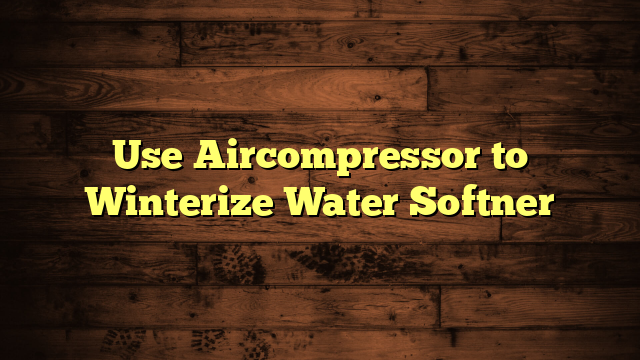How to Calculate Gallons for Water Softner?
When you're trying to figure out how many gallons your water softener needs, it all starts with understanding your household's daily water usage. You can estimate this by examining utility bills or considering the size of your family and their daily activities. Once you've got that number, you'll multiply it by the days in a month and factor in the hardness of your water. But that's just the beginning; knowing how to select the right softener based on those calculations is essential. What you learn next could make all the difference in efficiency and performance.
Key Takeaways
- Determine your household's daily water usage by reviewing water bills or using a water meter for accurate measurements.
- Multiply your daily usage by the number of days in the month to find total monthly water usage.
- Test your water hardness to establish the grains per gallon, which will affect softener capacity calculations.
- Use the softener's grains capacity (e.g., 30,000 grains) and the hardness level to calculate the gallons needed for effective operation.
- Regularly monitor and adjust the softener settings based on usage patterns and salt levels for optimal performance.
Understanding Water Hardness
When it comes to understanding water hardness, you'll find that it's primarily determined by the levels of dissolved minerals, like calcium and magnesium, in your water supply.
Water hardness is measured on a hardness scale, which ranges from soft to very hard water. Soft water typically has less than 60 mg/L of calcium carbonate, while hard water can have over 180 mg/L.
You can easily identify your water's hardness by using a test kit or by checking with your local water supplier. The hardness scale helps classify water into categories: soft (0-60 mg/L), moderately hard (61-120 mg/L), hard (121-180 mg/L), and very hard (over 180 mg/L).
Understanding where your water falls on this scale is essential, as it affects everything from the efficiency of your appliances to your skin and hair health.
High water hardness can lead to limescale buildup in pipes and appliances, while soft water may not effectively remove soap scum.
Determining Household Water Usage
Understanding your water hardness is only part of the equation; you also need to know how much water your household uses. Start by checking your water meter. This handy device measures your total water consumption, giving you a clear picture of your household's usage patterns.
You can look at your water bill to find monthly totals, but tracking daily or weekly usage can provide even more insight. Consider factors like the number of people in your home, the frequency of laundry, and your watering habits.
For instance, if you have a large family, your water consumption will likely be higher than average. Also, keep an eye on seasonal changes, as outdoor activities can spike your water use in warmer months.
It's helpful to take notes over a week or two, noting when you use the most water. This practice will help you identify trends and better understand your overall usage.
Calculating Total Gallons Needed
To accurately calculate the total gallons needed for your water softener, you'll first want to determine your household's daily water usage.
Start by gathering your water usage data from your utility bill or by estimating based on the number of people in your home. Once you have this figure, multiply it by the number of days you want to calculate for—typically, a month works well.
Next, it's time for some capacity calculations. Most water softeners regenerate after a certain number of gallons have been treated, so it's important to know how many gallons your unit can handle.
For instance, if your softener has a capacity of 30,000 grains and you're using 10 grains per gallon of hardness, you can convert this into gallons by dividing the total grains by the hardness level.
To guarantee accuracy, always use the correct gallon conversion when switching between measurement systems.
After you've calculated both your daily usage and your softener's capacity, you'll be able to determine the total gallons needed effectively. This way, you can make sure your water softener continues to work efficiently, providing you with soft water when you need it.
Selecting the Right Water Softener
Choosing the right water softener is essential for ensuring your home's water quality meets your needs. With various water softener types available, it's important to evaluate the specifics of your household.
Here are some key capacity considerations to help you decide:
- Household Size: Determine how many people live in your home, as larger households typically require more capacity.
- Water Hardness: Test your water's hardness level. This will help you understand how effective the softener needs to be.
- Daily Water Usage: Estimate your daily water consumption. This includes everything from showers to laundry, since it impacts the softener's efficiency.
- Regeneration Frequency: Decide how often you want your system to regenerate. More frequent regeneration can mean a larger system is needed.
Adjusting for Water Hardness Levels
Water hardness levels play a critical role in determining how much water your softener needs to process.
To start, you'll want to conduct hardness testing on your water supply. This will give you a clear idea of how many grains of hardness exist per gallon. Knowing this number is essential for adjusting your softener settings effectively.
Once you have your hardness level, you can use adjustment methods to calculate the necessary gallons for your system.
If your water is particularly hard, you may need to increase the capacity of your softener to handle the extra minerals. Alternatively, if the hardness level is lower, you might be able to decrease the amount of water processed, saving both water and salt.
Maintenance and Efficiency Tips
To keep your water softener running smoothly, regular system inspections are essential.
You'll also want to manage your salt levels and time the regeneration process ideally for the best efficiency.
Regular System Inspections
Regular system inspections are essential for maintaining the efficiency and longevity of your water softener.
By evaluating system performance regularly, you can catch potential issues before they escalate. The inspection frequency should depend on your water usage, but aim for at least twice a year.
Here's a quick checklist to guide your inspections:
- Check for leaks – Inspect all connections and hoses for signs of water leakage.
- Monitor the salt level – Verify you have enough salt, as low levels can hinder performance.
- Examine the brine tank – Look for any sediment or buildup that could affect the system.
- Test water hardness – Use a test kit to analyze the hardness of your water and adjust settings accordingly.
Salt Level Management
Managing the salt level in your water softener is crucial for peak performance and efficiency. The right salt type and dosage guidelines can greatly impact how well your system operates. You'll typically find three main types of salt: rock salt, evaporated salt, and solar salt. Each type has its pros and cons, so choose based on your specific needs and budget.
To maintain ideal salt levels, check your brine tank regularly, ideally once a month. Aim to keep the salt level at least half full, as this guarantees your softener has enough salt to function effectively.
When adding salt, follow the dosage guidelines provided by the manufacturer, paying attention to the size of your unit and the hardness of your water. Be cautious not to overfill the brine tank, as this can lead to salt bridging, where a solid mass forms and prevents salt from dissolving into the water.
If you notice this happening, you'll need to break up the bridge or remove it entirely. By managing your salt levels properly, you'll enhance the efficiency of your water softener and prolong its lifespan, saving you time and money in the long run.
Optimal Regeneration Timing
Timing your water softener's regeneration cycle is essential for maintaining its efficiency and effectiveness. By adjusting the regeneration frequency and guaranteeing ideal settings, you can reduce salt and water usage while extending the life of your system.
Here are four tips to enhance your regeneration timing:
- Assess Water Usage: Track your household's daily water consumption. This helps you determine how often your system needs to regenerate.
- Set Regeneration During Off-Peak Hours: Schedule the regeneration cycle for late night or early morning when water demand is low, ensuring it doesn't interfere with your daily routines.
- Adjust Based on Water Hardness: Test your water hardness level regularly. If it changes, you may need to adjust the regeneration frequency to maintain ideal performance.
- Monitor Salt Levels: Keep an eye on your salt levels. If they're consistently low, it might be time to tweak the regeneration settings to guarantee your system runs smoothly.
Implementing these strategies will help you get the most out of your water softener, guaranteeing it works efficiently while saving you time and money in the long run.
Troubleshooting Common Issues
When you encounter issues with your water softener, it's essential to identify the problem quickly to restore its efficiency. Start with some basic troubleshooting tips.
One common problem is the presence of hard water, which indicates that your softener isn't working properly. Check the salt level in the brine tank; if it's low, refill it to guarantee proper regeneration.
Another issue might be the control valve. If you hear unusual noises or notice water bypassing the system, inspect the valve for clogs or malfunctions.
You may also find that your water has an unpleasant taste or odor. This could suggest that your resin beads are dirty or exhausted. In such cases, consider running a regeneration cycle or replacing the resin if necessary.
If your softener is leaking, look for cracks in the brine tank or connections that may need tightening.
Finally, always refer to your user manual for specific troubleshooting steps tailored to your model. By addressing these common problems promptly, you'll maintain your water softener's effectiveness and enjoy the benefits of soft water without interruption.
Frequently Asked Questions
What Is the Best Type of Salt for Water Softeners?
When choosing salt for your water softener, consider evaporated salt for its purity and efficiency. Rock salt's less refined nature can lead to more impurities, so it might not be the best choice for you.
How Often Should I Regenerate My Water Softener?
You should adjust your softener settings based on water usage, typically regenerating every 7 to 14 days. Regular maintenance guarantees peak performance, so monitor regeneration frequency to prevent hardness buildup in your water supply.
Can I Use Softened Water for Drinking?
You can use softened water for drinking, but it's important to evaluate drinking safety. Check your softener's sodium levels, as excessive sodium might not be suitable for everyone, especially those with certain health conditions.
What Are the Signs My Water Softener Needs Maintenance?
You might think your water softener's just fine, but if you notice cloudy water or salty taste, you're in for a surprise! Regular maintenance tips can improve water quality and keep it running smoothly.
How Do I Know if My Water Is Still Hard?
To know if your water's still hard, look for hard water indicators like scale buildup or dry skin. You can test hardness using strips or kits, giving you clear results about your water quality.
Conclusion
In the grand quest for soft water, remember that calculating your gallons isn't just a math problem—it's your ticket to a sudsy utopia. So, don't let hard water turn your hair into a straw-like disaster; embrace those calculations with gusto! Armed with your newfound knowledge, you'll select the perfect softener and keep it running smoothly. After all, who wouldn't want their laundry to feel like a spa day? Now, get out there and soften up your life!







